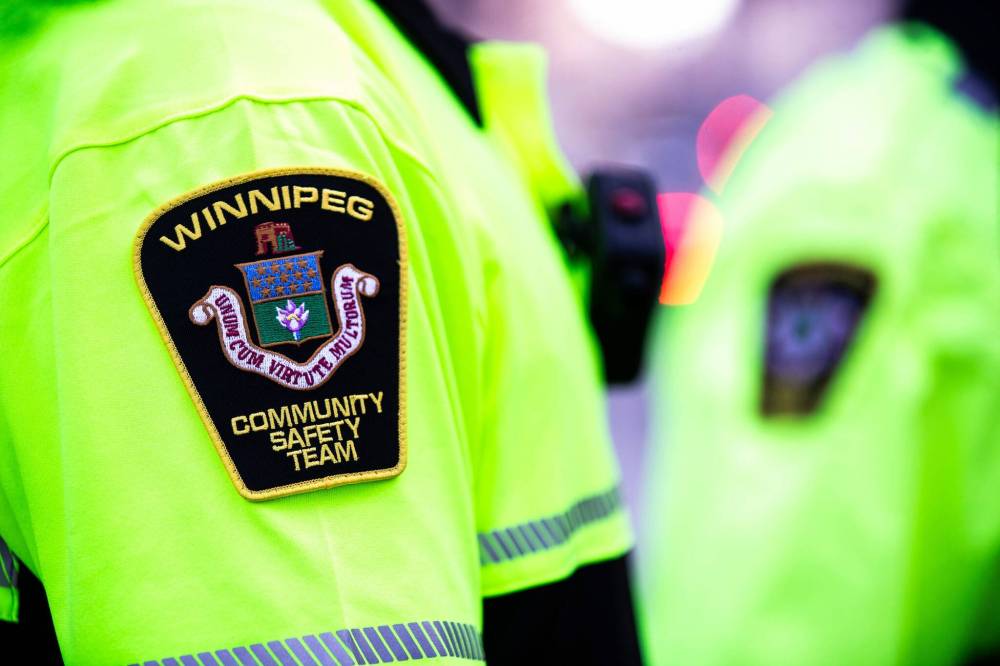Tough truths about city violence
Advertisement
Read this article for free:
or
Already have an account? Log in here »
To continue reading, please subscribe:
Monthly Digital Subscription
$1 per week for 24 weeks*
- Enjoy unlimited reading on winnipegfreepress.com
- Read the E-Edition, our digital replica newspaper
- Access News Break, our award-winning app
- Play interactive puzzles
*Billed as $4.00 plus GST every four weeks. After 24 weeks, price increases to the regular rate of $19.00 plus GST every four weeks. Offer available to new and qualified returning subscribers only. Cancel any time.
Monthly Digital Subscription
$4.75/week*
- Enjoy unlimited reading on winnipegfreepress.com
- Read the E-Edition, our digital replica newspaper
- Access News Break, our award-winning app
- Play interactive puzzles
*Billed as $19 plus GST every four weeks. Cancel any time.
To continue reading, please subscribe:
Add Free Press access to your Brandon Sun subscription for only an additional
$1 for the first 4 weeks*
*Your next subscription payment will increase by $1.00 and you will be charged $16.99 plus GST for four weeks. After four weeks, your payment will increase to $23.99 plus GST every four weeks.
Read unlimited articles for free today:
or
Already have an account? Log in here »
Hey there, time traveller!
This article was published 20/03/2024 (583 days ago), so information in it may no longer be current.
Manitoba has become an increasingly violent province over the past 10 years. There is no way to sugarcoat that.
The province’s crime severity index, which measures the amount and seriousness of police-reported offences, rose 28 per cent over the past 10 years. Worse, the province’s violent crime severity index, which places greater weight on violent offences such as homicides, robbery and serious assaults, jumped 35 per cent during the same period.
And while there has been an uptick in violent crime across the country over the past decade, it is nowhere near as pronounced as it is in Manitoba.

MIKAELA MACKENZIE / FREE PRESS
Transit safety officers walk down Graham Avenue on Feb. 20, 2024.
Rising crime, and the growth in violent offences, has forced governments to respond by beefing up security in public places. The province passed legislation in 2021 to create new institutional safety officers (ISOs) for hospitals and post-secondary education institutions, owing to growing concerns about safety.
The new safety officers have expanded powers, including authority to carry some weapons such as batons and pepper spray, and can make arrests. They have been used at the University of Manitoba and are slated to be deployed at Health Sciences Centre, a health facility plagued with growing violence and vandalism in recent years.
The City of Winnipeg has recently hired and trained new transit safety officers to respond to growing violence on city buses. Just days into the launch of the program, two transit safety officers were assaulted.
The city is now using metal detectors at the Millennium Library downtown following a high-profile homicide there. The Manitoba Legislative Building has also beefed up security considerably in recent years in response to repeated safety threats.
Commissionaires of Manitoba chief executive officer Chris Puhach said recently that the private security industry has noticed an increase in violence against security officers.
Meanwhile, young offenders appear to be more brazen, carrying not only bear spray, but now machetes as their weapon of choice. A 19-year-old woman suffered serious injuries last week after she was allegedly attacked by a youth brandishing a machete as she was waiting for a bus close to St. Vital Centre mall.
Winnipeg police Chief Danny Smyth has sounded the alarm bell about the growing number of youth in foster care committing a disproportionate number of violent crimes. Smyth said group foster homes don’t have the resources and tools to meet the needs of youth in care.
That gets us closer to the real problems driving crime: poverty, addictions, mental health issues, economic inequality — societal challenges that appear to be getting worse, not better, as policy makers try desperately to respond to the growth in violent crime.
Governments have no choice but to take immediate action to protect society, such as deploying ISOs and transit safety officers. But the growth in violent crime should be a wake-up call that governments and society have done a poor job of addressing the societal ills that drive crime.
Nowhere is that more obvious, and more alarming, than with troubled youth, whose anger and violent behaviour are rooted in feelings of hopelessness, abandonment and ostracization. Society has failed the children who are committing these heinous acts.
ISOs and transit security officers may help people feel more secure in the short term. They may even help prevent some offences in the future. But they don’t address the long-term problems of crime and the root causes that drive it.
Those issues deserve far more attention from governments and from society as a whole.








